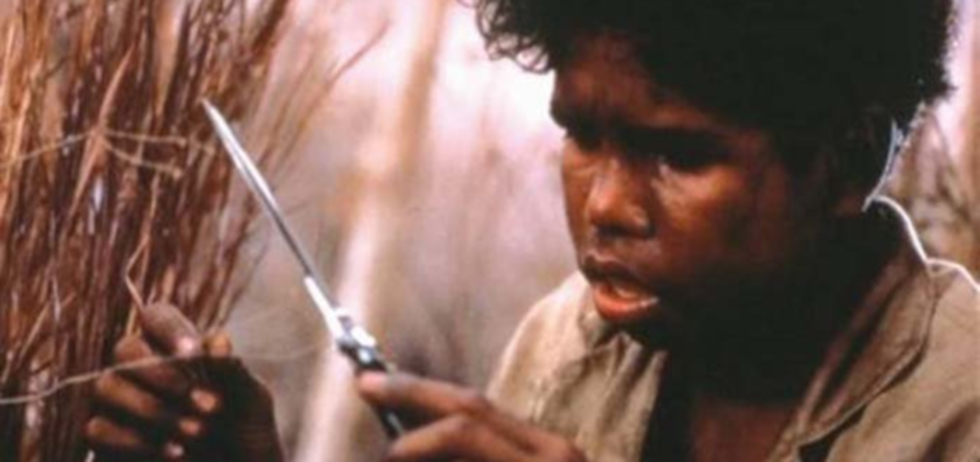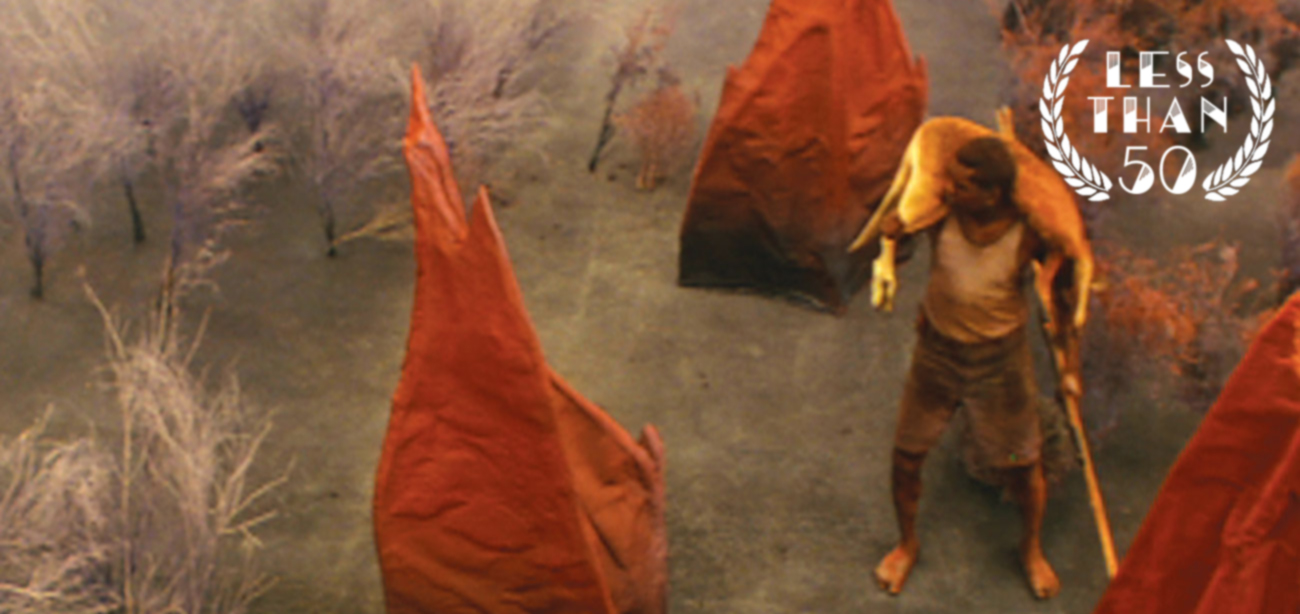In our new column, Less Than (Five) Zero, we take a look at films that have received less than 50 logged watches on Letterboxd, aiming to discover hidden gems in independent and world cinema. This week guest writer Jesse Thompson, of The 500 Club, looks at Tracey Moffatt’s horror triptych, BeDevil.
Date Watched: 6th October, 2014
Letterboxd Views (at time of viewing): 6
BeDevil was a series of firsts before it became a bellwether of missed opportunities within Australian cinema. The story begins with Jedda, Charles Chauvel’s proto-Imitation of Life melodrama – incidentally, the first film to star Aboriginal actors – about an Indigenous adoptee brought up in clinically white circles and institutions. Moffatt eloquently carried that logline to one extreme with the short Night Cries: a Rural Tragedy1, in which a bone-weary Aboriginal woman, played by scholar Marcia Langton, is burdened by an ailing white, live-in octogenarian.2 The short takes place in a lonely shed enwreathed by the landscapes that would come to be Moffatt’s signature: a palette of saturated blues and reds that also pay homage to Jedda’s vivid Arnhem Land exteriors, courtesy of that film’s intricate, tri-colour film development process.3 The memory of Jedda haunts Night Cries like a fever dream in lurid Technicolor.
From the same repository of tones, painterly set design, and thematic concerns with memory emerged BeDevil, Moffatt’s triptych of ghost stories that oscillate between an anti-naturalistic past and a post-modern present. Among the genres sinuously collaged by Moffatt’s feature-length debut are cooking shows, advertising, performance art, Dreamtime lore and broadcast interview – a pastiche that speaks to the artist’s dissatisfaction with conventional storytelling modes, as well as her deftness with a multitude of forms and their functions.4 The plasticity of surrealist set pieces by designer Stephen Curtis adds a hermetic staginess to the film, which is complemented by the way Moffatt’s camera tends to draw attention to a single prop at a time. The music moves between sounding like a 90s slasher score penned by Phil Glass and the eerie whistle of a Simpsons Halloween special, filtered through the manic tempo of a bossfight in a Gameboy Colour cartridge. These elements coalesce into something just the right side of otherworldly to be alluring and uncanny.
BeDevil fits this series to a tee because its Letterboxd view count is lower than any film essayed so far, yet its feigning towards an Indigenous cinema that could’ve been ought to make it the most renowned.5 Its generic and narrative complexity serve as a bold and intelligent answer to Australian cinema’s predilection for (drab) socio-realist (crime) storytelling – a problem that stands even 21 years after BeDevil’s Un Certain Regard premiere. As if that doesn’t vouch for a film due more relevance than something you’d find between Herzog VHSs in the back aisles of a university library, BeDevil was also the first feature film directed by an Aboriginal woman.
Likewise, for all the diversity of Australian cinema from the 90s onwards, Indigenous issues dramas often fall guilty of installing white Australians as storytellers and audience alike. De Heer is a prime example and Ivan Sen something of a counter-thesis, but take even Rachael Perkins’ hero-or-zero Aboriginal love triangle musical Bran Nue Dae, which coasts through on an artillery of familiar tropes. European drama conventions dominate. Otherness becomes unambiguous. BeDevil, on the other hand, is a story told with visual matches, generic post-modernity, and intertextuality.

Mostly, though, BeDevil is about the sacredness of oral histories and their ready co-option. Each of the standalone stories is concerned with the interplay of agency over their retelling. At times, the audience is denied information. Playing to a now/then dichotomy, for example, a white woman roughly in her fifties confides she was four in 1926. She’s cut off before disclosing her age, suggesting the present could instantiate itself in any year from about the 70s onwards. At other times, the irony is palpable to anyone cognisant of the malice in that same woman’s referring to her Bribie homestead as ‘my island home’.
She tells part of Mr Chuck. The other storyteller is a middle-aged man of Aboriginal descent, recalling his childhood story from an obscure present-day setting that might just be an asylum or prison calling room. The woman’s present is bookended by a collection of aerial shots over Bribie Island worthy of a real estate commercial. The man’s past is an unsettling tableau of swampy greys and fluoro green vistas. After an American GI’s jeep nosedives into quicksand, the soldier’s ghost begins to manifest in elusive ways. In the flurry of Bribie Island construction, developers take to building a cinema over the soldier’s death place: an appropriately literal approximation of the laying of concrete over pre-existing stories.
Choo Choo Choo Choo delivers the most direct problematisation of assimilationist rhetoric. An eerily cheery camaraderie of small-towners welcome the camera crew, then a shopkeeper tours through his antiques store and, likewise, the cultural miscellanea we still hold as valuable. In BeDevil, what’s implied or unseen is often more terrifying than what is; this shows as the story turns to a 1920s-ish family terrorised by an invisible freight train that chugs through their front yard. What sounds like a knife being sharpened floats, sinisterly, in and out of the sound design. In the contemporary timeline, the family’s now-adult daughter revisits the house, accompanied by a retinue of Aboriginal women sporting rainbow-visored sunglasses. They compare recipes for wild snake terrines with walnut vinaigrettes.
Lovin’ the Spin I’m In is perhaps the closest merger of the past and early 90s present of the three shorts, containing fluid time spans as well as various nods to Australia’s multiculturalism, a computer desktop the size of a microwave, and a teenage boy who gets around on roller-skates. It mostly takes place between an elderly Islander and the landlord who lives adjacent, the latter of whom is pressured by a pair of casino tycoons to empty his lot of renters then upgrade the residency. Though also purporting the loosest narrative of the three stories, Moffatt’s themes resonate as strong and incensing as ever: “Why is Imelda sad?” the landlord’s son asks of his grieving neighbour. “That’s not for you to know.”
